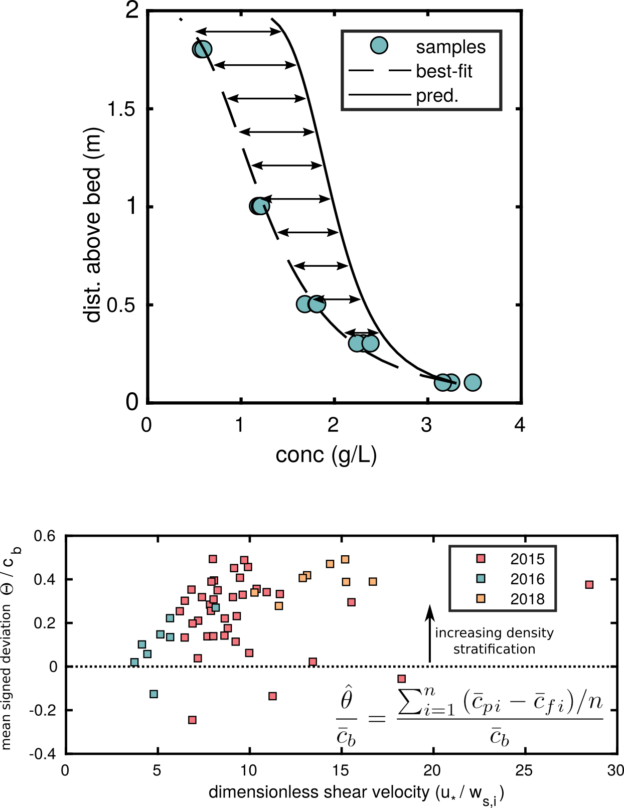Research
High-concentration flow dynamics – sediment diversion efficiency
Introduction
Sediment suspended in a fluid flow creates stratification, because sediment-laden fluid has a higher effective density than single-phase fluid. The exceptionally high sediment load of the Yellow River makes this river an ideal natural laboratory to study density stratification.
This research project addresses how high sediment concentration in the Yellow River impacts the mechanics of sediment transport. Sediment flux to a delta is a first-order control on deltaic avulsion frequency. Additionally, sediment transport mechanics dictate the vertical distribution of sand in the flow, which directly impacts sediment extraction in engineered diversions built to combat coastal land loss.
Methods

This study combines field observations with numerical simulations to document density stratification in open-channel flow in unprecedented detail. The observed density stratification is enhanced for fine sediment relative to coarse sediment, whereby the coarsest sediment is relatively unaffected.
Insights
Our findings indicate that even very-fine sediment (<25 \(\mu\) m) extracts turbulent energy from the flow, and that the washload threshold grain size in the Yellow River is finer than conventionally assumed. This work advances a fundamental understanding of energy balance in open-channel flow, and improves models predicting sediment concentration profiles. Improved models bolster sediment diversion project assessments, and contribute to comprehensive understanding of sustainable delta management strategies.
Publications generated by this research
- Moodie, A. J., Nittrouer, J. A., Ma, H., Carlson, B. N., Wang, Y., & Lamb, M. P. (2021). Suspended-sediment induced stratification inferred from concentration and velocity profile measurements in the flooding lower Yellow River, China. Water Resources Research. doi: 10.1029/2020WR027192
- Ma, H., Nittrouer, J. A., Naito, K., Fu, X., Zhang, Y., Moodie, A. J., Wang, Y., Wu, B., & Parker, G. (2017). The exceptional sediment load of fine-grain dispersal systems: Example of the Yellow River, China. Science Advances, 3, 7. doi: 10.1126/sciadv.1603114
- Ma, H., Nittrouer, J. A., Wu, B., Lamb, M. P., Zhang, Y., Mohrig, D., Fu, X., Naito, K., Wang, Y., Moodie, A. J., Wang, G., Hu, C., & Parker, G. (2020). Universal relation with regime transition for sediment transport in fine-grained rivers. Proceedings of the National Academy of Sciences. doi: 10.1073/pnas.1911225116
- de Leeuw, J., Lamb, M. P., Parker, G., Moodie, A. J., Haught, D., Venditti, J. G., & Nittrouer, J. A. (2020). Entrainment and suspension of sand and gravel. Earth Surface Dynamics. doi: 10.5194/esurf-8-485-2020
- Lamb, M. P., Leeuw, J. de, Fischer, W., Moodie, A. J., Venditti, J. G., Nittrouer, J. A., Haught, D., & Parker, G. (2020). Mud in rivers transported as flocculated and suspended bed-material. Nature Geoscience. doi: 10.1038/s41561-020-0602-5
